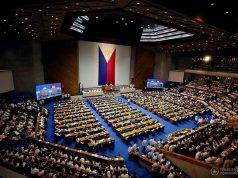FDI inflows rise in Jan.
By Luz Wendy T. Noble
Reporter
NET INFLOWS of foreign direct investments (FDI) grew by 12% in January from a year ago, a trend that economists said is unlikely to be sustained as the coronavirus crisis continues.
Data from the Bangko Sentral ng Pilipinas (BSP) showed FDI inflows in January rose by 12.1% to $657.1 million from the $586 million recorded a year ago.
“This development, which was before the imposition of the community quarantine in the country (in mid-March) due to COVID-19 (coronavirus disease 2019), reflects continued investor confidence in the Philippine economy, despite global economic uncertainties,” the BSP said in a statement on Monday.
However, January’s FDI inflows tumbled 42.98% from the $1.153 billion logged in December. The January inflows were also the lowest since the $623 million worth of FDIs logged in November.
The central bank in November projected FDI inflows to hit $8.8 billion in 2020.
In 2019, FDI net inflows dropped by 23.1% to $7.647 billion from the $9.9 billion recorded in 2018.
According to the BSP, net investments in debt instruments which include intercompany borrowings during the month sank by 57.9% to $233 million from the $553 million in January 2019.
Reinvestment of earnings also slipped by 5.1% to $72 million from $76 million.
Meanwhile, equity other than reinvestment of earnings turned around to $352 million from a net withdrawal worth $43 million last year. This, as placements doubled to $373 million from $186 million, while withdrawals dropped by 90.7% to $21 million from $229 million.
In January, equity capital infusions came mostly from the Netherlands and Singapore. The central bank said inflows were mainly funneled into the manufacturing and real estate sectors.
Inflows to equity and investment fund shares also soared to $424 million from the $33 million seen in January 2019.
The year-on-year increase in inflows was bolstered by better risk appetite on the back of developments in the US-China trade war, according to UnionBank of the Philippines Inc. Chief Economist Ruben Carlo O. Asuncion.
“[It] can be attributed to the steadily improving global trade climate due to the resolution of the US-China trade war through the Phase 1 deal,” he said in an e-mail.
Investor sentiment was also buoyed by the spike in government spending, said Michael L. Ricafort, chief economist at Rizal Commercial Banking Corp.
“The pickup in government spending, especially in infrastructure since the latter part of 2019 to early 2020 may have also encouraged the increase in FDIs as of January,” he said.
On the other hand, the month-on-month decline in FDI inflows may be attributed to the “temporary shock due to the Taal Volcano eruption,” Mr. Asuncion said.
“[It] may already be attributed to coronavirus concerns that already led to the unprecedented lockdown in China, the world’s second-biggest economy, in the latter part of January,” Mr. Ricafort said.
ING Bank N.V. Manila Senior Economist Nicholas Antonio T. Mapa said FDI inflows will be weaker this year as the global economic outlook worsened due to the severity of the impact of COVID-19.
“The pandemic will likely mean less FDI flows for this year and maybe next as companies may not be in expansionary mode after the virus forced lockdowns across the globe,” he said in an e-mail.



